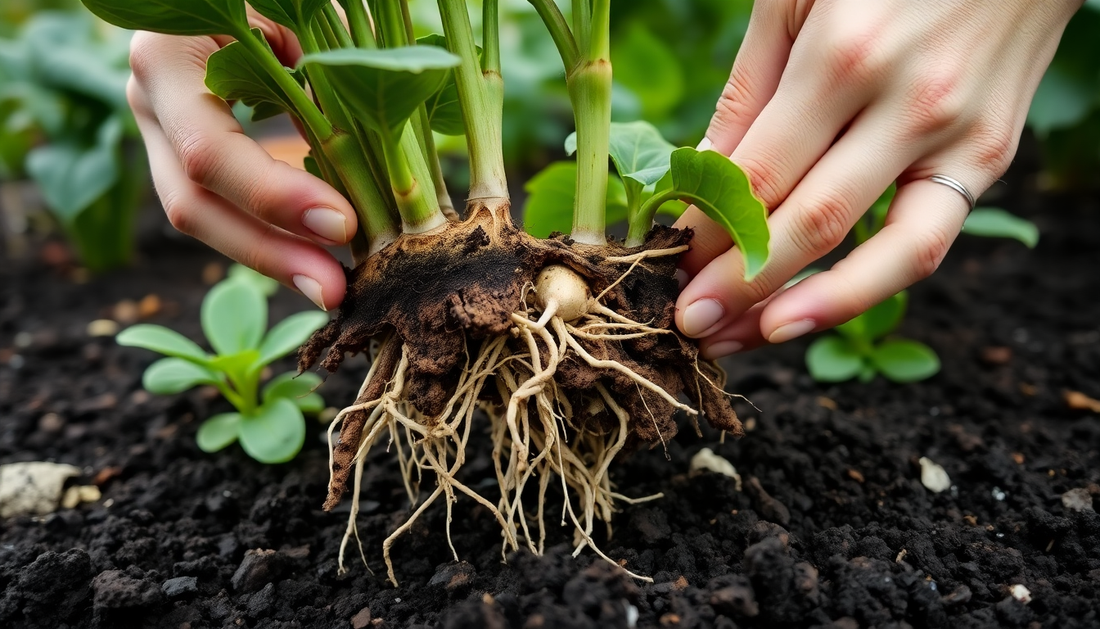
Reviving Your Veggies: Tackling Root Rot for a Thriving Garden
As a passionate gardener, there's nothing quite as disheartening as watching your beloved vegetable plants succumb to the dreaded root rot. This insidious fungal disease can quickly turn a vibrant, healthy garden into a withering, lifeless landscape. But fear not, my fellow green thumbs! With the right knowledge and a bit of diligence, you can conquer root rot and restore your vegetable patch to its former glory.
In this comprehensive guide, we'll delve into the causes of root rot, the telltale signs to watch out for, and the most effective strategies to treat and prevent this common garden scourge. Whether you're a seasoned gardener or just starting your journey, this blog post will equip you with the tools and techniques to keep your vegetables thriving, even in the face of this stubborn adversary.
Understanding Root Rot
Root rot is a fungal disease that affects the roots of plants, causing them to decay and ultimately leading to the plant's demise. The culprit behind this problem is often a group of fungi known as Pythium, Phytophthora, or Rhizoctonia, which thrive in moist, poorly-drained soil conditions.
When these fungi take hold, they begin to attack the plant's root system, disrupting the vital processes of nutrient and water absorption. As the roots deteriorate, the plant's overall health declines, leading to wilting, yellowing leaves, and stunted growth. Left unchecked, root rot can quickly spread throughout your entire vegetable garden, devastating your hard-earned efforts.
Identifying the Signs of Root Rot
Recognizing the early signs of root rot is crucial in order to address the problem before it spirals out of control. Here are some telltale indicators to keep an eye out for:
Wilting and Discoloration
One of the first signs of root rot is wilting or discoloration in the plant's leaves and stems. As the roots become compromised, the plant's ability to transport water and nutrients is impaired, causing the foliage to wilt, turn yellow, or even brown.
Soft, Mushy Roots
Gently dig around the base of the plant and examine the roots. Healthy roots should be firm and white or light-colored. If the roots are soft, mushy, and dark in color, it's a clear sign of root rot.
Stunted Growth
Plants affected by root rot will often exhibit stunted growth, with smaller leaves and a generally lackluster appearance. This is because the damaged roots are unable to provide the plant with the necessary resources for robust development.
Foul Odor
A telltale sign of root rot is a distinct, unpleasant odor emanating from the soil around the affected plant. This foul smell is a result of the decomposing roots and the anaerobic conditions that the fungi thrive in.
Preventing and Treating Root Rot
Now that you know how to identify the signs of root rot, it's time to take action. Here are some effective strategies to prevent and treat this pesky problem:
Improve Soil Drainage
One of the primary contributors to root rot is poor soil drainage. Ensure that your vegetable garden has well-draining soil by incorporating organic matter, such as compost or aged bark, to improve soil structure and aeration.
Avoid Overwatering
Excessive moisture is a breeding ground for the fungi that cause root rot. Be mindful of your watering schedule and adjust it based on the weather and your plants' needs. Stick to the "soak and dry" method, allowing the soil to partially dry out between waterings.
Choose Resistant Varieties
When selecting vegetable varieties for your garden, look for cultivars that are known to be more resistant to root rot. Some examples include tomatoes, peppers, and certain squash varieties.
Treat Affected Plants
If you've already identified root rot in your garden, it's time to take action. Carefully remove the affected plants, being sure to discard the entire root system. Avoid composting the diseased material, as this can spread the fungi to other areas of your garden.
Next, treat the affected soil with a fungicide specifically formulated to target the root rot pathogens. Follow the product instructions carefully, and be sure to reapply at the recommended intervals to ensure the fungi are eliminated.
Promote Healthy Root Growth
In addition to treating the root rot, you can take steps to encourage healthy root development in your remaining plants. Apply a balanced, slow-release fertilizer to provide the necessary nutrients, and consider using a root stimulator product to boost root growth and resilience.
Maintaining a Healthy, Vibrant Garden
Conquering root rot is a battle, but with the right strategies and a bit of diligence, you can keep your vegetable garden thriving. Remember, prevention is key – focus on improving soil drainage, avoiding overwatering, and choosing resistant varieties. And if the dreaded root rot does rear its ugly head, act quickly to contain the problem and restore the health of your plants.
By following the tips outlined in this blog post, you'll be well on your way to a lush, productive vegetable garden that can withstand the challenges of root rot. Happy gardening, and may your veggies flourish!







No comments